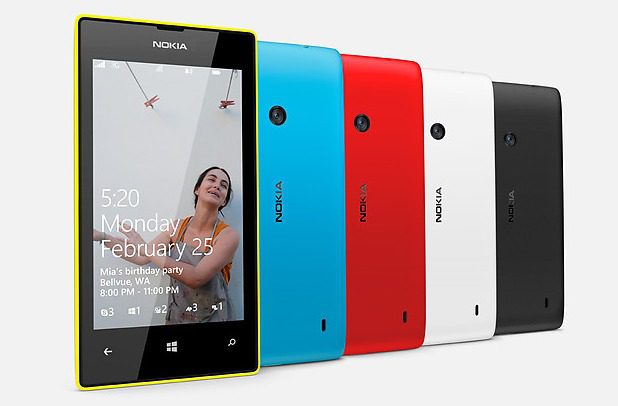Why is the Lumia 520 selling so well in India?
5 min. read
Published on
Read our disclosure page to find out how can you help MSPoweruser sustain the editorial team Read more
Nokia has been steadily getting back into the game with the Lumia series, and is posting good numbers. In its earning call for this quarter, the Finnish manufacturer posted a total loss of $196 million, which is significantly better than last year wherein the loss was $1.31 billion. Its Devices and Services division is doing much better thanks to the strong sales of Lumia devices in emerging markets.
Now that the Windows Phone platform itself is gaining momentum, Nokia has seen fit to target the heavily contested budget segment of the market with the Lumia 520 in countries like India. Make no mistake; this device has its work cut out for it as it goes directly against the likes of local manufacturer offerings like the Xolo Q700, Micromax’s Canvas 2 Plus and Karbonn’s S5 Titanium,.
Lumia 520 details
In a market that is clearly focused on Android, Nokia has introduced a Windows Phone device that is very distinct, and comes with a lot of features that are unique to the platform. While it doesn’t make sense to match internal hardware of the Lumia 520 with the budget Android crowd as Windows Phone works well on meagre hardware, let’s go through what the 520 offers. It comes with a 4-inch screen with a resolution of 800X480, dual-core 1 GHz processor, 512 MB RAM, 8 GB ROM, 5 MP camera and a 1430 mAh battery.
What makes the Lumia 520 stand out?
Although the hardware is decidedly low, the Lumia 520 has managed to find a lot of traction in growing markets, and has now become the best-selling Windows Phone device to date. In India alone, it has 31.3% of the Windows Phone market. What makes the device stand out from so many others in the market? Let’s find out:
- Lack of international manufacturers: There is a dearth of handsets in this category from international manufacturers like Nokia in the country. While Samsung does have a device in the category in the Galaxy S Duos, it is very sluggish and doesn’t hold a candle to the current batch of devices from Micromax and Karbonn. So for Nokia to have a device in this segment adds a lot of value as the Finnish manufacturer has a lot of brand recognition in India.
- Colours: From the first glance, the Lumia 520 stands out. In a world filled with black or white Android handsets, the Lumia 520’s design and styling is a breath of fresh air. Also, it is available in 5 colours, making it stand out amidst a crowd of dreary devices.
- Freshness of Windows Phone: We are now at a stage where Android is fairly common and ubiquitous. Therefore, a Windows Phone device is seen as something different from the norm, and has the wow factor thanks to the UI elements like Live Tiles and solid colours.
- Nokia software: To say that Nokia’s services on the Windows Phone are useful would be an understatement. With its location based HERE services that use augmented reality to its streaming music services, Nokia has ensured that all of its services make the best use of the unique features of the Windows ecosystem. In fact, these services are one of the main reasons why most individuals go for a Windows based device.
- Free Microsoft Office: All Windows mobile devices come with Microsoft Office installed. This is sure to be a major incentive to buy a Windows device as the Office suite is still regarded as one of the best document editing suites in the market today.
It’s not all good for Windows Phone
For all its features and great UI, the Windows Phone platform does have its drawbacks. Most of them center around the fact that Microsoft was too late in joining the mobile OS game. By the time it launched Windows Phone, iOS and Android already managed to latch on to a significant section of the market share. Let’s take a look at what’s ailing Microsoft’s offering:
- Lack of content: The Windows store is sorely lacking some of the major names that we come to know on Android and iOS. Instagram is a notable absentee. Even YouTube was not officially available on the Windows store, with Google saying that it wasn’t worth the effort to make a native YouTube app.
- Basic features missing: Windows Phone lacks some of the basic features that are standard on other platforms. There is still no unified notification center, no ability to create and organize folders, and the multitasking is broken. There is also no universal search.
- Email is cumbersome: Email is inherently bothersome on Windows Phone devices. There is no way to attach documents directly, and considering that one of the major incentives in buying a Windows device is Microsoft Office, we’re not sure as to why Microsoft did not decide to include this feature.
For all its drawbacks, the Windows Phone 8 platform is actually quite good and offers users something new. It is on this premise that the Nokia Lumia 520 is selling so well. With the Lumia 520 priced at Rs. 8,864($170), it is understandable why buyers are choosing Nokia’s offering over budget Android devices. The Lumia 520 offers a sleek UI, a great design and a vast array of colour combinations in a segment where every other mobile looks the same. The strong sales of the Lumia 520 come down to two things: robust design and the uniqueness of Windows mobile when seen against the likes of Android.









User forum
0 messages